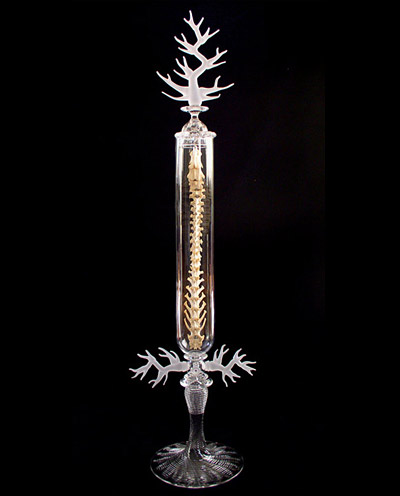Mary Poppins Is My Co-Pilot

Inspiration is where you find it, and everyone’s gotta start somewhere. Before Enki Bilal’s blue-haired future-hotties and Peter Chung’s Aeon Flux, I had Gennady Kalinovsky and his black-bobbed, fishnet-stockinged, high-heeled no-nonsense powerhouse, Mary Poppins. From the moment I opened the book in 1988 I perceived Miss Poppins as a polished badass, with a collection of dubious acquaintances and a seedy past. Her lipstick was always perfect, she wore well-fitting suits and kept many secrets. Sure, she was sardonic and vain, but she was the best.

The original Mary Poppins stories are kid brain-candy, with magic, adventures, talking animals and going behind parents’ backs, but what really made me love the now-tattered book I’ve kept my whole life is the artwork. One might call Gennady Kalinovsky a Russian Edward Gorey, but I’d rather not. His line-art universe is looser and more psychedelic, with warped perspective and spindly figures you’d sooner expect in an eerie Jean-Pierre Jeunet flick than on the pages of kids’ classic. The twins drawing below the cut gave me nightmares and I’m forever grateful – I only wish more illustrators exercised this kind of freedom in children’s books.
After a bit of research I found that Gennady actually had quite a penchant for the surreal – check out the art he created for Alice in Wonderland , Behind the Looking Glass, and Master and Margarita – my top all-time favorites.

I remember the first and only time I watched the 1964 film about the character I grew up loving, and how disturbed I was by my Mary parading about in ugly pseudo-Edwardian garb, dancing, and, perhaps worst of all, singing. It’s not the first terrible thing Disney has done to a childhood favorite, but for me it was certainly the most jarring.
Looking over the Mary Poppins books’ Wikipedia page it becomes even more apparent just how much my view of the stories and the character has been colored by a Russian translation and the accompanying illustrations. I almost want to give Disney credit for matching their Poppins costumes to the original Mary Sheppard illustrations! Instead, I wish I could shake late Kalinovskiy’s hand and thank him for the introduction to my very first female ideal. Short dark hair, perfect makeup, stockinged legs and an arsenal of experience is how I pictured every modern fictional heroine for years after reading Mary Poppins. I remember when Margarita looked just like her.
A few more of Kalinovsky’s Mary Poppins illustrations after the jump, and the rest of them here on Flickr just for you!















